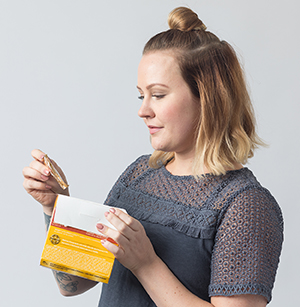Understanding STIs
When it comes to sex, nothing is risk-free. Any sexual contact with the penis, vagina, anus, or mouth can spread a sexually transmitted infection (STI). These include chlamydia, gonorrhea, herpes, HIV, and genital warts. The only sure way to prevent STIs is not having sex (abstinence). But there are ways to make sex safer. Use a latex condom each time you have sex. And choose your partner wisely.
Use condoms for safer sex
If you have sex, latex condoms provide the best protection against STIs. Latex condoms stop the exchange of body fluids that carry STIs. They also limit contact with affected skin. Be aware that a condom doesn’t cover all skin. So affected skin that isn't covered can still transfer disease. But you’re safer with a condom than without one. Use a condom even if you use other birth control. Birth control methods such as the pill or IUD help prevent pregnancy, but they don't protect against STIs.

Choose the right condom
Condoms made of latex prevent disease best. If you’re allergic to latex, use polyurethane condoms instead. Male condoms fit over the penis. Female condoms line the vagina. Before buying a condom, read the label to be sure it prevents disease. Some novelty condoms don’t.
The right lubricant helps
Buy lubricated condoms or use lubricant. This provides greater comfort and reduces the risk for condom breakage. Use only water-based lubricants. Don’t use oil, lotion, or petroleum jelly. They can weaken the condom, causing breakage. Also, you may want to choose lubricants without nonoxynol-9. This spermicide may cause irritation. It can raise the risk for certain STIs, including HIV.
Use condoms correctly
For condoms to work, they must be used the right way. Keep these tips in mind:
-
Use a new latex condom each time you have sex. Slip the condom on the penis before any contact is made.
-
When ready to withdraw, hold the rim of the condom as the penis pulls out. This prevents the condom from slipping off.
-
Check the expiration date before using a condom.
-
Don’t store condoms in places that can get hot, such as a car or a wallet that's carried in a back pocket.
Get to know your partner
Safer sex is a process. It means getting to know your partner and making informed choices. Ask each other how many partners you've had in the past, and how many you have now. Find out if either of you has HIV or any other STIs. If you decide to have sex, use a condom each time. Don’t stop using condoms unless you’re sure neither of you has other partners. And unless you’ve both been tested to confirm you don’t have HIV or other STIs. Then stay disease-free by having sex only with each other (monogamy). If you think you have been exposed to any STI, ask your healthcare provider about testing and treatments if needed.
Keep your cool
Don’t let alcohol or drugs cloud your judgment. They could lead you to have sex with someone you wouldn’t have chosen if you were sober. Or you might forget to use a condom. If you do plan to have sex, keep a latex condom with you. Don’t wait until you’re in the heat of passion to try to find one.
Consider abstinence
The only way to be sure you won’t get an STI is to not have sex. Abstinence is a choice that many people make at some point in their life. Maybe you want to wait until you're sure you’re ready before you have sex. Maybe you’d like a break from the responsibilities of sex for a while. Or maybe you just want to know your partner better before taking the next step. Abstinence is a choice you can make now to protect your future.